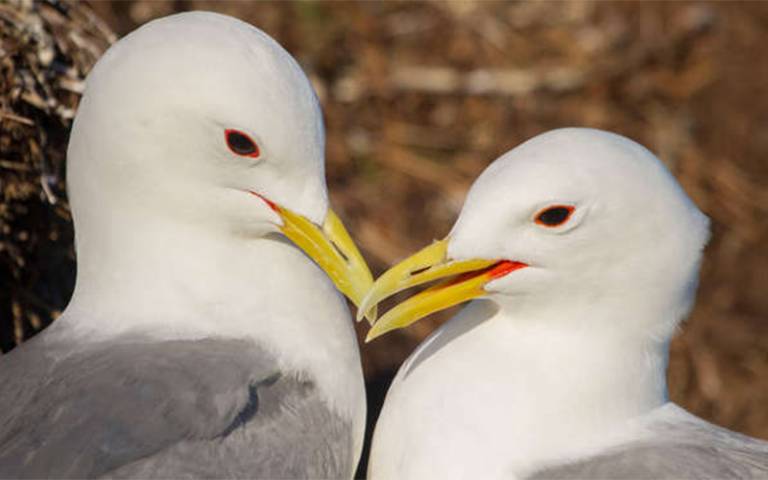Offshore windfarm developments could avoid adding to the plight of wild birds such as the black-legged kittiwake, by ensuring that the most recent data on local populations is considered when planning, reports a new study led by a UCL and ZSL researcher.

Research published today in Conservation Science and Practice shows that although the UK has some of the best seabird monitoring activity anywhere in the world, key data is being ignored during offshore windfarm planning assessments.
Around the world, seabirds are experiencing long-term population decline, with climate change and reduction in food sources as the key drivers. These threats are compounded for seabirds in the UK, which now face additional risks from poorly planned offshore wind energy development.
Renewable energy from wind farms is set to quadruple within the next decade, and although this is good news for reducing carbon emissions, seabirds are at risk of displacement from feeding sites, and even death due to collisions with turbine blades.
Developers often rely on a tool called a Population viability analysis (PVA) to assess potential impacts to vulnerable species, such as seabirds. These assessments typically use summary data to predict how future seabird populations might fare. However, many species of seabird such as cliff-nesting gulls like the kittiwake (Rissa tridactyla) are experiencing ongoing population decline due to other pressures. Not taking these existing drivers of change into consideration when assessing the potential impacts from windfarms could influence developers' understanding of how already struggling species are likely to respond.
ZSL (Zoological Society London) and UCL conservation scientist and lead author of the study, Dr Catharine Horswill (UCL Centre for Biodiversity & Environment Research) said: "If existing drivers of population change are not considered during assessments, future threats are likely to be underestimated. We need windfarms to tackle the climate crisis but protecting biodiversity must also be a priority. We need to tighten up assessments to make sure that potential impacts to already struggling wildlife, such as the kittiwake, are better understood.
"There have been great developments to help protect vulnerable wildlife in the rise of renewable energy developments, but more still can be done."
The study focused on a colony of black-legged kittiwakes breeding on Skomer Island in Wales - within close proximity of an offshore wind energy development currently under planning assessment. Skomer is home to other seabirds including the largest Atlantic puffin colony in southern Britain, and over half of the world's Manx shearwater population. The population of kittiwakes at Skomer declined rapidly between 2005 and 2020 and is experiencing ongoing decline in rates of breeding success (number of chicks that successfully fledge each year). This is thought to be due in part to rising sea surface temperatures, and reduced sources of food.
By incorporating the ongoing rate of decline in kittiwake breeding success into current wind farm planning assessments (PVAs), the team saw the levels of predicted impact dramatically increase. This showed that current assessments may underestimate long-term risk.
Lisa Morgan, Head of Islands and Marine at The Wildlife Trust of South and West Wales (WTSWW) said: "In principle, we support the development of the marine renewables industry. However, we recognise that uncertainties exist regarding the levels of impacts of these technologies on Welsh marine life and therefore a precautionary approach needs to be applied to their development. This means the location, scale and type of marine renewable energy schemes should be determined by proper environmental assessment, using the best available data.
"We don't know for sure what's driving the decline of kittiwakes on Skomer, although we do know that the number of chicks that fledge is low in recent years. This work by Catharine and the team, illustrates the importance of our long-term seabird monitoring on Skomer. If used correctly, our data can help developers and government to determine whether proposed floating offshore wind projects near Skomer are likely to make matters worse for a species already struggling."
Black-legged kittiwakes are listed as Vulnerable on the IUCN Red List. Overlooking current declines in rates of breeding success when assessing a colonies' response to new offshore renewable energy developments could therefore have drastic long-term consequences for this species.
Dr Horswill added: "Datasets of seabird breeding success and populations counts are openly available for UK colonies on public databases. Our study shows that declining breeding success is widespread across the UK and Ireland, with many colonies showing even faster rates of decline than seen at Skomer. I hope this study spurs change to the guidance surrounding data requirements for impact assessments for offshore renewable energy developments."






